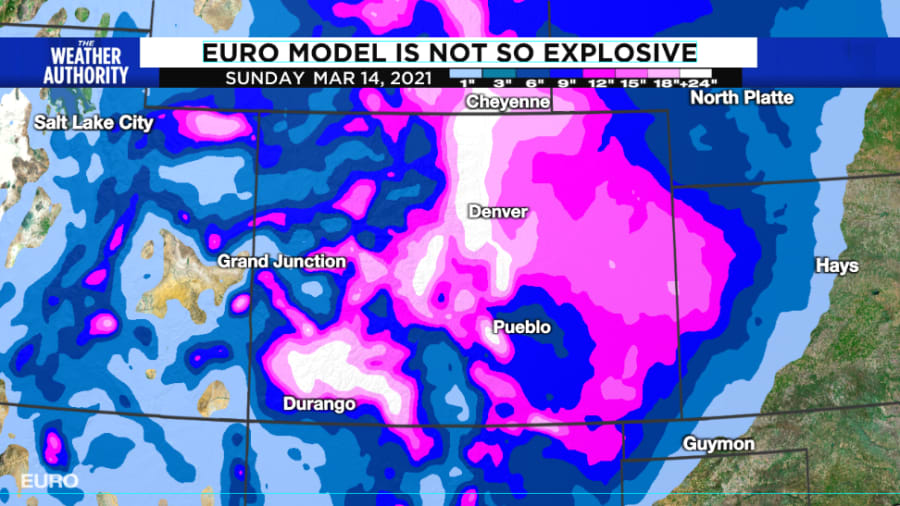What caught my eye this week was what could be a blowout of a winter storm for Colorado.
Not for the higher elevations where the ski resorts are located (mainly central and western Colorado) but rather the Foothills from Colorado Springs to Boulder and east through Denver. This will be interesting to watch as the Global Forecast Model (which has had a solid track record lately) is really piling it on. The red on the image above represents more than three feet of snow that could fall in successive storms, while the EURO forecast model predicts a “mere” two to three feet of snow.
Recommended Videos
Regardless, anyone planning travel with a stop-over flight through Denver should be on the alert as there could be trickle-down impacts on air travel through Houston, Dallas and Chicago starting Saturday through next week. Why through early next week?
They will see another minor blast, only four to 12 inches of snow, with a second storm system next week.
So there could be places along the Colorado Foothills that see three to four feet of snow on the ground when it’s all said and done. Oh, did I mention they could have winds up to 45 miles per hour? Which means there will be snow drifts and so-called white-out conditions that might last up to eight hours. In other words, we’re looking at the potential for a blizzard.
Here’s how the National Weather Service describes this phenomenon:
Blizzard event is imminent or expected in the next 12 to 36 hours. Sustained wind or frequent gusts greater than or equal to 35 mph will accompany falling and/or blowing snow to frequently reduce visibility to less than 1/4 mile for three or more hours.
This definition of blizzard has been somewhat watered down. Originally, it meant not just extreme snowfall rates (+2 inches per hour) with visibilities under a quarter mile, winds were 40 mph or greater, plus air temperatures had to be below 20 degrees with wind chill temperatures at or below zero. These were rare conditions and the term blizzard was not frequently used.
In the case of what is likely in Colorado, barring some major change in the forecast models, there will likely be Blizzard Warnings for large parts of Colorado, Wyoming and even western Nebraska. Talk about a brutal transition into astronomical spring, which will begin one week after this storm on March 20.





